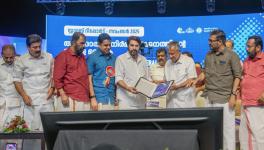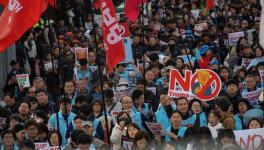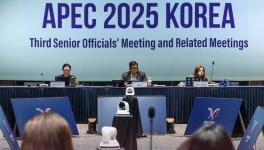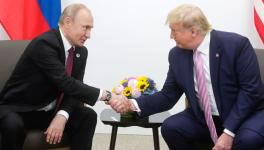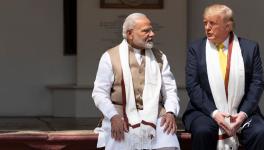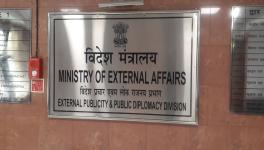Indo-Pacific Strategy Adrift in an Illusion
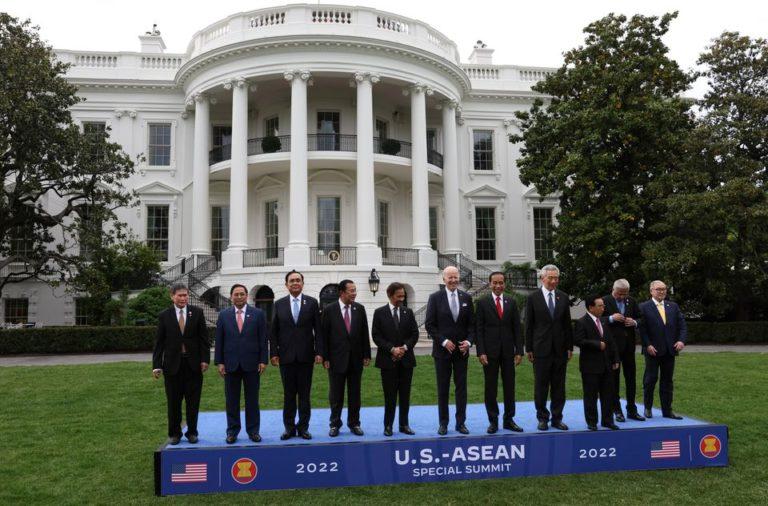
US President Joe Biden and leaders of Association of Southeast Asian Nations at a special summit, Washington, May 12, 2022
The Chinese daily Global Times featured a political cartoon marking the US-ASEAN summit meeting in Washington on May 12-13. It showed US President Joe Biden seeking help from a bus load of ASEAN officials to give a push to his battle tank hopelessly stuck on slush and mud and is sinking.
Biden’s tank is, of course, on the road to China. The cartoon captures the US’ desperate need to get the ASEAN countries align with its so-called Indo-Pacific strategy aimed at containing China. The ASEAN countries live by trade, but Washington’s obsessive focus is on security and coercive diplomacy, and the mismatch hinders the Indo-Pacific strategy from gaining traction.
The summit is a pivotal moment when the ASEAN leaders get to see whether Biden has anything to offer by way of economic cooperation — trading and investing, etc. — or will continue to cede regional economic integration with their region to China. In 2021, China’s trade with the ASEAN countries had touched $878.2 billion, by far outstripping the US’ trade with ASEAN ($362 billion per last available 2021 figures.)
The summit is not expected to yield much substance. Biden is placing store on its symbolism. He hopes to impress the ASEAN leaderships that even at such a fateful juncture with a war raging in Europe, the Indo-Pacific strategy remains his heart’s desire.
No doubt, Biden hopes to push the Ukraine issue with the ASEAN leaders seeking a coalition with them against Moscow. But the ASEAN countries have mixed views on Ukraine. Myanmar at one end is supporting Russia, while Singapore instinctively embraces Washington’s sanctions against Russia. Vietnam and Laos, with strong connections to Moscow since Soviet era, abstained at the UN General Assembly votes reprimanding Russia. The ASEAN countries are concerned over the increases in the cost of oil, gas, grains and fertilisers due to the conflict in Ukraine and call for a diplomatic solution to the crisis.
Washington’s entreaties to exclude Russia from the G-20, East Asia Summit and APEC later this year have been disregarded by the host countries (Jakarta, Phnom Penh and Bangkok.) Washington’s projection of Ukraine crisis as a confrontation between democracy and autocracy won’t fly in Southeast Asia, which widely practises hybrid forms of authoritarianism (Indonesia and Malaysia being exceptions.) The ASEAN countries do not want another bipolar world order. Nor do they want to get caught in the US-China rivalry trap. Besides, Russia is one of those rare countries that offers space for ASEAN to navigate the US-China relationship.
It will be interesting to see whether Biden pushes the envelope by coercing the ASEAN leaders to cut back on weapons purchases from Moscow or threaten them with secondary sanctions on Russian oil. Vietnam, Myanmar, Malaysia, and Indonesia have purchased a significant amount of military hardware from Russia.
Fundamentally, the US holds a weak hand in the absence of a robust economic and trade strategy to counter China’s increasing influence in the region. The Biden Administration is averse to negotiating any new free trade agreements. With with protectionist sentiments running high, opening American market access is viewed as politically perilous.
The ASEAN, on the contrary, revel in free trade options. It is currently negotiating a FTA with Canada and its members are signatories to the Comprehensive and Progressive Agreement for Trans-Pacific Partnership (CPTPP) and the Regional Comprehensive Economic Partnership (RCEP). Beijing is a bird of the same feather — it has even applied for membership to CPTPP, while through RCEP, it aims to become even more integrated with ASEAN. Equally, the US lags far behind China in infrastructure investment. Washington has tom-tommed a Build Back Better World initiative to counter Beijing’s Belt and Road Initiative, but it remains in words.
The Indo-Pacific Economic Framework, which was announced in February as part of the US’ Indo-Pacific strategy, is unlikely to seduce the ASEAN leaders. The point is, for ASEAN countries, the bigger market by far is China. They are not going to be persuaded to build a supply chain completely decoupled from China.
Singaporean Prime Minister Lee Hsien Loong has said that Southeast Asia “does not want to choose” between China and the US. Indeed, ASEAN strives to maintain positive relations with both Washington and Beijing. The paradox is, while there could be strategic convergence between some ASEAN countries and US over China’s rise, there is also divergence with regard to the US approaches — in particular, Washington’s goals to counter the rise of China by building a US-led security order that might undermine ASEAN and by weaponising sanctions in its diplomatic toolbox.
The Indo-Pacific strategy visualises sees the development of a ‘free’ and ‘open’ region bolstered by strong alliances and partnerships. Such goals entice the Quad, which savours attempts to manage the rise of China. But where the ASEAN does not see eye to eye with Quad is in its desire (and need) for more robust economic engagement with Beijing and its preference for inclusive cooperation. Again, Beijing has come up with an alternative to a US-led security order when it counter-proposed its Global Security Initiative at the recent Boao Forum for Asia focusing on principles such as indivisible security.
On the South China Sea, the Washington Summit will make the usual noises about upholding international law, the UN Convention on the Law of the Sea and the peaceful resolution of disputes, but here too, how far the ASEAN is convinced about genuine US respect for its centrality in the regional security architecture is a moot point.
Meanwhile, a new factor is the election victory of Ferdinand Marcos Jr. as the next president of the Philippines. His running mate Sara Duterte is the daughter of outgoing president, Rodrigo Duterte, who had skilfully carved out a middle position between Beijing and Washington, resisting attempts by the US to raise tensions in the South China Sea, and opting instead to work with Beijing on territorial disputes and keeping high-level channels of communication open with Beijing on issues of mutual concern, including direct contact with President Xi Jinping.
As his presidential legacy, Marcos Jr. has vowed to sign a bilateral deal with China to settle the South China Sea issue. Xi Jinping’s congratulatory message to Marcos suggests that Beijing apparently senses an opportunity to reset the balance of relations with Manila. Conceivably, if the Philippines and China enter into deeper cooperation as well as finally resolve their South China Sea issue, it will shake up the Asia-Pacific, undermine the US efforts to militarise the Southeast Asian region and render hopelessly obsolete Biden’s Indo-Pacific strategy itself.
Interestingly, the Philippines, which was the US’ closest regional ally historically, is giving a miss to the Washington Summit, pleading the political transition in Manila. During his entire six-year presidency, Duterte never once visited the US.
Get the latest reports & analysis with people's perspective on Protests, movements & deep analytical videos, discussions of the current affairs in your Telegram app. Subscribe to NewsClick's Telegram channel & get Real-Time updates on stories, as they get published on our website.









